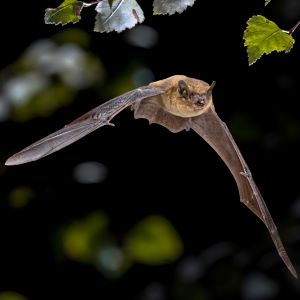
Preliminary Ecological Appraisal
This report gives you key information on planning for wildlife and highlights key constraints and opportunies for your project.
Preliminary Ecological Appraisal may also be called a Phase 1 survey or a Preliminary Ecological Assessment.
We will work with you to ensure we communicate quickly the information you need for your designers and planners.
When can it be done and how long will it take ?
Preliminary Ecological Appraisal can be undertaken under most weather conditions and throughout most of the year.
Although there are no restrictions on the survey, sometimes additional surveys may be needed later on which do have timing constraints or an optimum time.
Except on very large sites, fieldwork can normally be completed within a day.
What does it involve ?
We will carry out both a desk-based study and a “walkover survey” to confirm conditions on site and to help us understand the context of your project.
We will create an appropriate “area of search” (AOS) for the study, based on what you are planning and the nature of the proposals. We determine this using the “zone of influence” (ZOI) of the project. For example the “zone of influence” for housing might include both the proposed site and nearby sensitive wildlife sites that might experience increased use from new residents. This allows us to fully assess the effects and recommend actions to make the development sustainable.
We will carry out a desktop study to collate existing biodiversity information within the “area of search” (AOS) , using sources such as:
- Accessible aerial photos and maps ( such as Google Maps and Bing Maps ) to identify the habitats and species potentially present, and context of the site within wider landscape;
- Public databases (such as MAGIC ) to identify any relevant nature conservation sites and their designated features;
- Record centres Where agreed, asking the Local Environmental Records Centre to search their records of species, habitats or locally designated sites ( e.g. Local Wildlife Sites);
- Other existing records : Any other easily available records ( such as as existing site reports).
Carrying out a field survey
As far as safely or physically possible, we will walk over the footprint of the proposed development and surrounding areas that there is access to. We are happy to help you with getting access permissions and talking to neighbours about the survey or you may prefer to keep our survey visit confidential.
There is no special equipment used during the survey other than our clipboard, although we may use binoculars and torches to seach for protected species. Unless there are additional considerations due to presence of protected species or protected sites, generally a licence isn’t required. We are fully licenced for bats and newts.
We will map and describe the habitats present. Where appropriate, we will use the “Phase 1” system, which is a national method for simply classifying habitats (see JNCC 2010). Field notes will be taken on plant species present and the extent and structure of habitats. Where appropriate, “target notes” will be used as per JNCC(2010) to map any features of additional ecological interest. We will take photographs to illustrate what we have found where possible any features of special ecological interest.
Where we see a “priority or protected species“, or their field signs of such species, then we will record this. We will record any incidental records of non-native invasive plant species, such as Japanese knotweed.
Writing the report
Completing a list of features
Putting all the information together, we will compile a report on the ecological features, to give a list of features potentially relevant as “material considerations” within planning policy, such as :
- Designated sites;
- Protected or priority species;
- Priority habitats;
- Ancient Woodlands;
- Ecological features of local significance.
Protected or priority species
Where we find protected species, then we will obviously record the details of this in the report.
We will also make an assessment of which protected or priority species may potentially be present and how they might use the site. We will base this on the desktop information, field results and potential of the site to support them.
We can carry out surveys at the same time as specific surveys for species such as bats. Where there are buildings, trees and other structures, we will sometime take rely on other protocols for surveys.
Designing for wildlife and planning
Based on what we know about your project, we can now identify which features require further consideration.
We will make firm recommendations on potential environmental sustainability issues to consider for planning for wildlife. Issues to consider might be :
- Opportunities and constraints on your development from wildlife;
- How your design might take account of wildlife;
- Whether any additional surveys might be needed before or after planning;
- Whether a licence might be needed for construction;
- Whether special methods to avoid, mitigate or compensate for effects on wildlife might be needed;
- Ways to positively enhance your site
Relevant guidelines
CIEEM (2017) Guidelines for Preliminary Ecological Appraisal, 2nd edition. Chartered Institute of Ecology and Environmental Management, Winchester1
1https://cieem.net/wp-content/uploads/2019/02/Guidelines-for-Preliminary-Ecological-Appraisal-Jan2018-1.pdf
JNCC (2010) Handbook for Phase 1 habitat survey – a technique for environmental audit2



